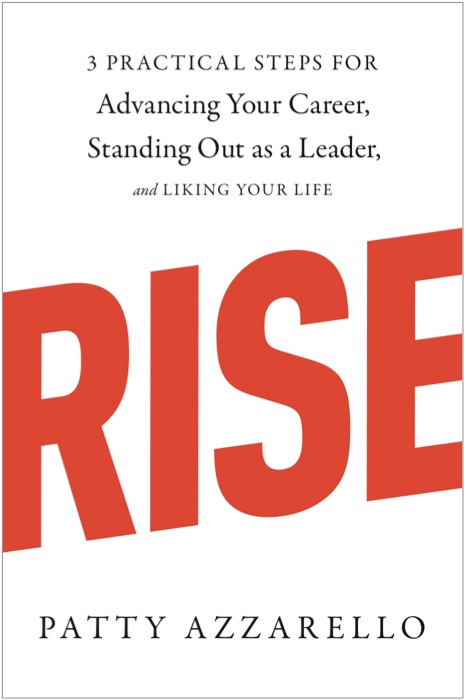Stalled Progress
Two questions for you:
1. Do you have an initiative that you talk about as being really important to your business, but you are not making progress on it?
2. Have you been talking about it (without making progress) for a year or more?
If you can answer yes to these questions, you are not alone!
I see this stalled progress on key initiatives in my work with management teams all the time.
Shallow Nice-ness
There are several things that stall progress, but one that occurs a lot is the human tendency to avoid conflict.
And it’s almost impossible for a team to make progress on something new, without raising, and working through some conflict.
Many teams opt for a false sense of agreement and pleasantness instead.
The problem becomes that to “maintain the peace”, you must avoid creating clarity about what you are really going to do.
You stay at the level of the high-level goal, and hoped-for outcome, but no concrete plan to actually do it.
Get Comfortable with Clarity… and Conflict
Clarity is the secret sauce for execution.
You need to be comfortable with the fact that creating real clarity is going to expose disagreements. It’s going to expose gaps. It’s going to expose things that you need to deal with.
Once you get concrete about what you intend to do, when? how? what? who? where does the money come from? how will you measure success? and what are the consequences for not doing it? you’ll raise all kinds of opportunity for disagreement and conflict.
Once you get really clear, people will not agree.
But that’s the important part.
That means you are doing it right
As I bring teams through this process of getting real clarity, taking the time to hear the opinions and debate, we reach a point where everyone can see what they need to do differently, specifically.
It becomes clear what everyone needs to do personally to achieve the big goal. Everyone leaves knowing exactly what is expected, and how they will be measured on what they do moving forward.
For example, If you just say, “we need to sell solutions at a higher level in our customer base”, everyone can feel happy, agree, and get along. People will just nod their head, smile…and nothing will happen.
As soon as you say, “but to do that means that we will take our top 5 reps, target them at these 5 strategic accounts, give the rest of their accounts to others and change their comp plan”, you are inviting conflict. But the good news is that you’ll know what you are actually going to do! So you can do it.
Being Fuzzy – the comfortable hazard
If you are not clear enough to cause and then work through conflict, I call this being fuzzy. Being fuzzy may be more comfortable in the moment, but it stalls progress because:
- Nothing changes.
- People go back to whatever they were doing before because they clearly know what that is — and they don’t know, specifically, what they need to do, to do the new thing.
- When the outcome doesn’t happen, you can’t put your finger on what isn’t working, because you never defined exactly what “working” looks like.
- If people are not performing you can’t do performance management because you haven’t defined the expectations clearly enough to show the gap.
- If you can’t show the gap, you can’t get people to cross it.
Productive Conflict
Here are some ideas for how to do create clarity and work though necessary conflict with your team:
Clarify the Desired Outcome
First you need to be really clear about the desired outcome. What is expected?
Then:
- You need to break that big goal down clearly into smaller, concrete parts.
- You need to be clear about who is responsible for each piece.
- You need to be clear about how each piece is resourced.
- You need to be clear about what doing something different in each case means to the old way of doing something.
- You need to be clear about how the roles of specific people change.
- You need to be clear about not only what the new tasks and deliverables are, but what are the new behaviors and values that are expected at each level.
- You need to be clear about how the success of each role will be measured.
- You need to be clear about what the consequences are for not doing the new thing.
- You need to be clear about what will be communicated.
.
But getting clarity on any one of these points opens the door to conflict.
You need to be comfortable with that and be ready to work through it.
Example #1
For example one team I worked with had the goal to improve the quality of their products. Everyone agreed that the priority of the next product release was quality.
They thought they agreed, but then I asked the following kinds of questions:
- In what ways will you change your testing process?
- Will you invest in new people or systems for ensuring or measuring quality?
- Will those resources be additive or taking from somewhere else? Where?
- Will you include customer testing earlier in the process?
- Will the role of the product developers change to include any quality elements?
- Will you measure the performance of the product developers differently? How so?
- Will you re-rate the priority of all the bugs in the system? Or just some of them? Under what criteria?
- Does that mean that you will stick to your quality plan when the sales force is clamoring for new features?
.
Once we had this level of discussion (and conflict) we were able to create a real quality improvement plan with concrete tasks, owners, measures, and communications about it. Everyone know what to do and what to expect.
Example #2
Another example to continue from above…another organization I worked with had the goal to sell higher up in organizations. They all agreed on that. But then we had the following discussion:
- Do you expect every rep to spend some time on strategic deal making? How much time? Doing what, exactly?
- Or will you pilot this in a few accounts with a few key sales reps? Which reps? Which accounts? What happens to the rest of their accounts?
- Will you offer the same products? Or will you need to create new product/solution offers to appeal at a higher level?
- How will you engage customers differently? Are people trained to do that? Who will be trained?
- How will you measure if it is happening? What will you do it if isn’t?
- Or does that mean that you will split the team into tactical and strategic teams?
- Will you change the comp plans of the sales team?
.
Again, once we had this level of discussion, they were able to come up with a concrete plan to make, measure, and communicate progress each quarter over the next year.
Remove Uncertainty
One of the most important things you can do as a leader is to remove uncertainty.
It can feel uncomfortable to be so clear that it raises conflict. Discussing the answer to all these kinds of questions out loud, with your team, opens the door to conflict, but that’s a good thing.
That is the only reliable way to move forward, and get out of the position of still talking about an initiative a year later, that you haven’t made progress on.
What do you think?
How do you create clarity and deal with conflict to make progress. Please share your experience in the comment box below.
Was this useful?
If you found this article useful, please help me share it (share button below) with others and encourage them to subscribe to this Blog for free.
About Patty
Patty Azzarello is an executive, best-selling author, speaker and CEO/Business Advisor. She became the youngest general manager at HP at the age of 33, ran a billion dollar software business at 35 and became a CEO for the first time at 38 (all without turning into a self-centered, miserable jerk)
You can find Patty at www.AzzarelloGroup.com, follow her on twitter or facebook, or read her book RISE…3 Practical Steps for Advancing Your Career, Standing Out as a Leader, AND Liking Your Life.




